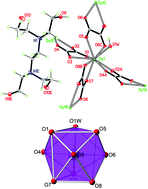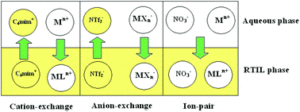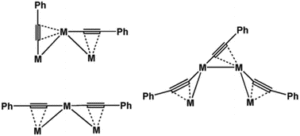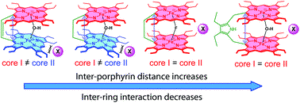Coordination Chemistry is one of the cornerstones of inorganic chemistry. Novel combinations of metals and ligands can reveal interesting features of both, and result in complexes with new reactivity and magnetic or spectroscopic properties. Here are some of the highest cited papers on coordination chemistry from Dalton Transactions in 2017.
Most Cited Articles:
This original research is off to a great start, as some of our most cited work these papers and communications are already being recognized by the coordination chemistry community.
Huili Ma, Lu Wang, Jinghuo Chen, Xuejing Zhang, Liang Wang, Na Xu, Guangming Yang and Peng Cheng
| Dalton Trans., 2017, 46, 3526-3534
DOI: 10.1039/C7DT00159B
A multi-responsive luminescent sensor for organic small-molecule pollutants and metal ions based on a metal–organic framework is reported. |
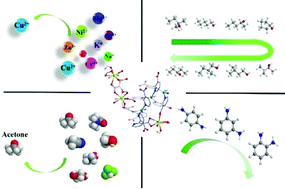 |
Muhammad Nadeem Akhtar, Yan-Cong Chen, Murad A. AlDamen and Ming-Liang Tong
Kun Zhang, Dan Liu, Veacheslav Vieru, Lei Hou, Bin Cui, Fu-Sheng Guo, Liviu F. Chibotaru and Yao-Yu Wang
Most Cited Reviews:
These Frontier and Perspective articles are receiving a lot of attention online, reviewing the advances and trends that are making waves in the coordination chemistry community.
Prasanta Kumar Mohapatra
| Dalton Trans., 2017, 46, 1730-1747
DOI: 10.1039/C6DT04898F
Studies on the extraction of actinide ions from radioactive wastes have great relevance in nuclear fuel cycle activities, mainly in the back end processes focused on reprocessing and waste management. |
Alkynyl-protected gold and gold–silver nanoclusters
Zhen Lei, Xian-Kai Wan, Shang-Fu Yuan, Jia-Qi Wanga and Quan-Ming Wang
| Dalton Trans., 2017, 46, 3427-3434
DOI: 10.1039/C6DT04763G
Alkynyl-protected coinage metal nanoclusters show new structural features and have interesting luminescence properties and catalytic behavior.
|
Firoz Shah Tuglak Khan, Tapas Guchhait, Sujit Sasmal and Sankar Prasad Rath
|
Dalton Trans., 2017, 46, 1012-1037 DOI: 10.1039/C6DT03829H
A brief account has been presented on how the inter-heme interactions in μ-hydroxo diiron(III) bisporphyrins and counter anions can induce significant change in the structure and properties including the iron spin state without affecting the overall topology.
|
Submit your research or reviews on Coordination Chemistry to Dalton Transactions – see our author guidelines for information on our article types or find out more about the advantages of publishing in a Royal Society of Chemistry journal.


